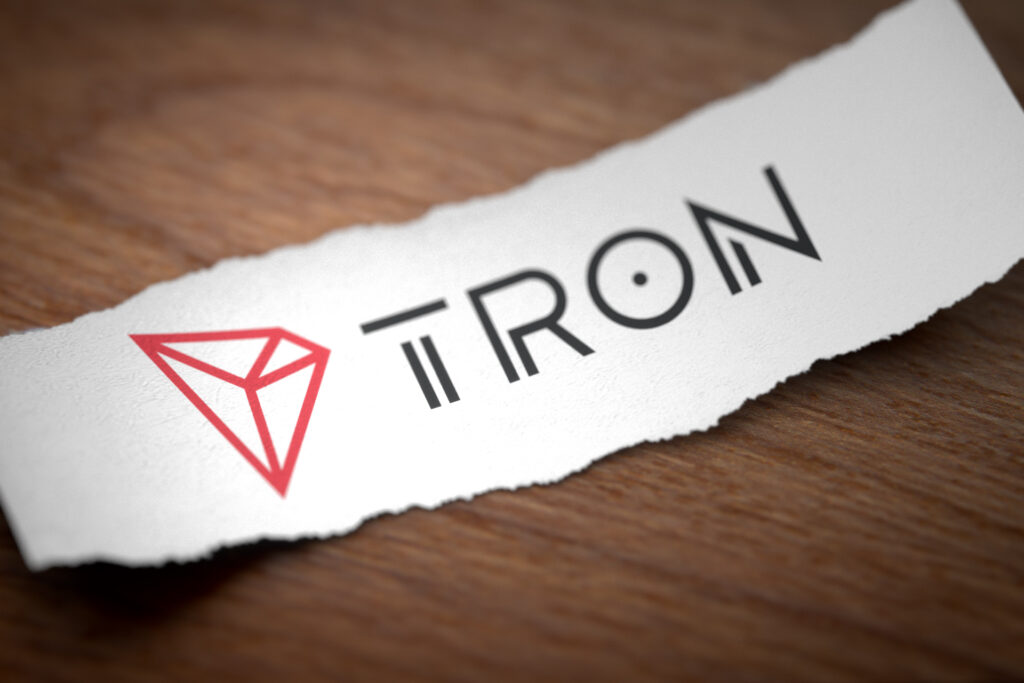Tron (TRX) is a cryptocurrency and blockchain platform that aims to decentralize the internet by allowing content creators to share their work directly with their audience without the need for intermediaries. The Tron network uses a Delegated Proof of Stake (DPoS) consensus mechanism and is capable of handling high transaction volumes. TRX is the native token of the Tron network and is used to pay for transactions and smart contract execution on the network. It can also be used to vote for Super Representatives, who are responsible for maintaining the network.
Tron was founded in 2017 by Justin Sun, a Chinese entrepreneur who has since become well-known in the cryptocurrency community. The Tron network uses a three-layer architecture consisting of a storage layer, a core layer, and an application layer. This allows for high scalability and flexibility, enabling the creation of a wide variety of decentralized applications (dApps) on the network.
Tron’s primary use case is as a platform for decentralized content distribution and storage. This includes things like social media, gaming, and streaming services. The Tron network also supports the creation of decentralized exchanges (DEXs) and other financial services.
TRX, the native token of the Tron network, can be bought and sold on a variety of cryptocurrency exchanges. It can also be stored in a variety of wallets that support the Tron network.
Tron has a strong developer community and has partnerships with a variety of organizations in the gaming and entertainment industries. It is considered as one of the top 10 cryptocurrencies by market capitalization.
how does tron work?
The Tron network uses a Delegated Proof of Stake (DPoS) consensus mechanism, which allows for high scalability and fast transaction speeds. In a DPoS system, token holders can “vote” for a group of individuals called Super Representatives (SRs) to serve as the network’s validators. These SRs are responsible for validating transactions, creating new blocks, and maintaining the network.
In order to participate in the network, users must hold TRX, the native token of the Tron network. TRX can be used to pay for transactions and smart contract execution on the network, as well as to vote for SRs. The more TRX a user holds, the more voting power they have.
The Tron network also has a three-layer architecture consisting of a storage layer, a core layer, and an application layer. This allows for high scalability and flexibility, enabling the creation of a wide variety of decentralized applications (dApps) on the network.
The storage layer is responsible for maintaining the ledger and storing data, the core layer handles the consensus mechanism, and the application layer is where developers can build and deploy dApps. The Tron Virtual Machine (TVM) is also provided by the network, which allows developers to write smart contracts in a variety of programming languages.
Tron has also launched its own decentralized finance (DeFi) ecosystem, called the JustSwap, to allow users to perform decentralized exchange of tokens on the Tron network.
Overall, Tron aims to create a decentralized internet where users have more control over their data and where content creators can connect directly with their audience without the need for intermediaries.
benifits of tron tokens?
There are several benefits of holding and using TRX, the native token of the Tron network:
Decentralized content distribution: Tron aims to decentralize the internet by allowing content creators to share their work directly with their audience without the need for intermediaries. This can help to promote a more open and decentralized internet where users have more control over their data.
High scalability and fast transaction speeds: The Tron network uses a Delegated Proof of Stake (DPoS) consensus mechanism, which allows for high scalability and fast transaction speeds. This makes it well-suited for building decentralized applications (dApps) that require high throughput.
Decentralized Finance (DeFi) : Tron has its own DeFi ecosystem, which allows users to perform decentralized exchange of tokens and other financial services.
Voting rights: TRX holders can vote for Super Representatives (SRs) to serve as the network’s validators. This helps to ensure that the network is maintained and governed in a decentralized and democratic way.
High liquidity: TRX is a widely traded cryptocurrency and can be easily bought and sold on a variety of cryptocurrency exchanges. It can also be stored in a variety of wallets that support the Tron network.
Diversification : TRX can be used as a diversification tool for investors and can provide a hedge against risks in other investments.
Overall, TRX can be considered as a valuable asset for investors and users who are looking for a decentralized platform for content distribution and decentralized finance.
how to stake tron tokens?
Staking TRX (or “staking” for short) on the Tron network refers to the process of holding TRX in a wallet and using it to vote for Super Representatives (SRs) in order to earn rewards. Here are the general steps for staking TRX:
First, you will need to acquire some TRX. You can purchase TRX on a cryptocurrency exchange such as Binance or Huobi.
Next, you will need to choose a wallet that supports TRX staking. Some popular options include Ledger Live, TronLink, and TRON Wallet.
Once you have your TRX in your wallet, you can select the “staking” option and choose the SRs you want to vote for. The number of TRX you hold will determine the number of votes you have. It’s important to do research on the SRs and choose the ones that align with your values and goals.
After you’ve voted, your TRX will be locked up for a certain period of time (usually around 3 days) and you will begin earning staking rewards. The amount of rewards you earn will depend on the number of TRX you hold and the number of votes you have cast.
Once the lock-up period is over, you can un-stake your TRX if you wish. However, if you choose to keep staking, you will continue to earn rewards.
It’s important to keep in mind that the process and requirements for staking TRX may vary depending on the wallet or service you choose. It’s always a good idea to read the documentation and consult the support team before making a decision.
Additionally, it’s important to note that staking comes with risks and it’s always a good idea to do your own research and understand the risks before making any investment decisions.

